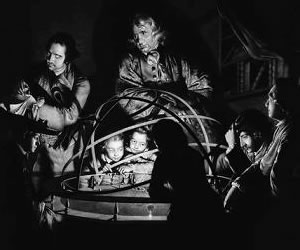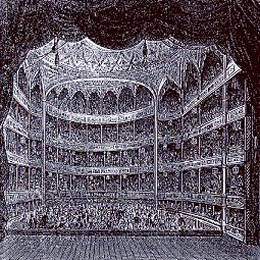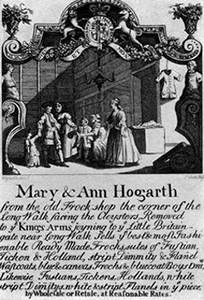The new urban culture

- The Orrery
- [click on the picture to enlarge it]
The ’hotbeds of invention’
- London: several societies were founded in the fields of the arts and sciences - the Royal Academy, the Royal Society of Arts and Manufactures, the Royal Institution. Close to London was the Royal Observatory at Greenwich.
- The Midlands: because of the industrialisation process, the Midlands were a ’hotbed of invention’ (Smollett), grouping scientists, industrialists, technicians, and philosophers, involved in the social and political affairs of the day. Among the major centres were Birmingham, Lichfield, the Potteries, and Derby.

- Drury Lane in London
- [click on the picture to enlarge it]
Theatres
There were theatres in numerous cities and towns; a Georgian theatre has survived in Richmond (Yorkshire).

- Tradecard for the artist’s sisters (1730)
- [click on the picture to enlarge it]
The new urban culture
- Domestic interiors: the multiplication of industries meant that a much larger number of objects of daily life, and sometimes luxury goods, became available, and to a wider public. Domestic interiors now contained numerous useful or decorative objects. Riches generated by the economy could be spent on them.
- Life outdoors:
- shops selling such objects became more numerous, and shopping, as well as following fashions - partly due to the wider variety of fabrics provided by the textile industry -, became a kind of entertainment;
- places of entertainment, such as gardens with music kiosks, public shows of optical tricks and other novelties, also developed.

